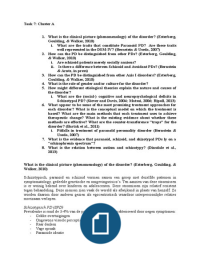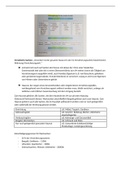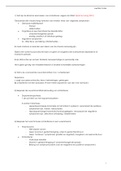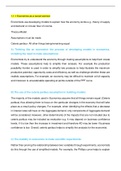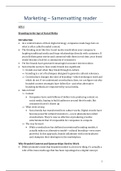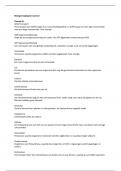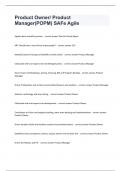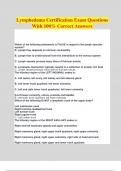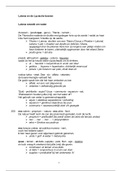Taak 7: Cluster A
1. What is the clinical picture (phenomenology) of the disorder? (Esterberg,
Goulding, & Walker, 2010)
i. What are the traits that constitute Paranoid PD? Are these traits
well represented in the DSM-IV? (Bernstein & Useda, 2007)
2. How can the PD be distinguished from other PDs? (Esterberg, Goulding,
& Walker, 2010)
i. Are schizoid patients merely socially anxious?
ii. Is there a difference between Schizoid and Avoidant PDs? (Bernstein
& Arntz, in press)
3. How can the PD be distinguished from other Axis I disorders? (Esterberg,
Goulding, & Walker, 2010)
4. What is the role of gender and/or culture for the disorder?
5. How might different etiological theories explain the nature and causes of
the disorder?
i. What are the (social-) cognitive and neuropsychological deficits in
Schizotypal PD? (Siever and Davis, 2004; Matsui, 2006; Ripoll, 2013)
6. What appear to be some of the most promising treatment approaches for
each disorder? What is the conceptual model on which the treatment is
based? What are the main methods that each treatment uses to achieve
therapeutic change? What is the existing evidence about whether these
methods are effective? What are the counter-transference "traps" for the
disorder? (Bartak et al., 2011)
i. Pitfalls in treatment of paranoïd personality disorder (Bernstein &
Useda, 2007)
7. What is the evidence that paranoid, schizoid, and shizotypal PDs ly on a
“schizophrenia spectrum”?
8. What is the relation between autism and schizotypy? (Dinsdale et al.,
2013)
What is the clinical picture (phenomenology) of the disorder? (Esterberg, Goulding, &
Walker, 2010)
Schizotypisch, paranoid en schizoid vormen samen een groep met dezelfde patronen in
symptomatology, gedeelde genetische en omgevingsrisico’s. Ten aanzien van deze stoornissen
is er weinig bekend over kinderen en adolescenten. Deze stoornissen zijn relatief resistent
tegen behandeling. Deze mensen zien vaak de wereld als afwijkend in plaats van henzelf. Ze
worden daarom door anderen gezien als egocentristisch waardoor interpersoonlijke relaties
moeizaam verlopen.
Schizotypisch PD (SPD)
Prevalentie is rond de 3-4% van de populatie. Wordt gekarakteriseerd door negen symptomen:
- Gekke overtuigingen
- Ongewone visuele percepties
- Raar denken
- Vage spraak
- Paranoide ideatie
, - Ongepast affect
- Gek of excentriek uiterlijk of gedrag
- Weinig goeie vrienden
- Paranoide geassocieerde sociale angst
Er zijn volgens Raine twee typen SPD:
- Constellatie van neuro ontwikkelingsproblematiek die een individu gevoelig maken
voor de ontwikkeling van schizofrenie
- Meer psychosociale functies en grotere symptoomvariatie
Rainse stelde ook voor dat er drie factoren ten grondslag liggen aan SPD:
- Cognitief perceptueel
- Interpersoonlijk
- Gedesorganiseerd
De ernst van SPD symptomen is afhankelijk van leeftijd en geslacht.
Paranoide persoonlijkheidsstoornis
Prevalentie van rond de 2 tot 4%. Deze mensen hebben pervasieve en langdurige
achterdochtigheid en waakzaamheid. Deze achterdocht is mogelijk door een vergrote
waarneming van kwetsbaarheid op geanticipeerde slechte behandeling en uitbuiting door
anderen. Die worden gezien als gevaarlijk en manipulatief. Als resultaat voelen deze mensen
vaak woede over vermoedelijke mishandeling, angst over waargenomen dreiging en een
verhoogd gevoel van angst dat door anderen vaak wordt gezien als koppig, defensief en
onbuigzaam. Mensen met deze diagnose hebben moeite met vertrouwen, excessief bezorgd
over vertrouwelijkheid, ernstig jaloers over de trouw van de partner en ze hebben de neiging
om anderen de schuld te geven of moeite met het bekijken van andere mogelijkheden. PPD
kan net als SPD worden gekarakteriseerd door een multidimensionale taxon.
Er bestaat enigszins bewijs dat PPD het beste kan worden gerepresenteerd door twee
verschillende dimensies:
- Achterdocht
- Vijandigheid
Schizoide persoonlijkheidsstoornis
Minder dan 1 procent van de populatie. Wordt gekarakteriseerd door een tekort aan
interpersoonlijke relaties en geen behoefte om deze relaties ook te zoeken. Deze mensen
richten hun leven vaak zo in dat ze slechts weinig interpersoonlijk contact met anderen
hoeven te maken, zoals een baan die vrij afgezonderd kan worden uitgevoerd. Ze zien zichzelf
eerder als observeerder dan als deelnemers in de maatschappij. Zij offeren vaak hun intimiteit
op om hun autonomie te behouden die nodig is om bepaalde overtuigingen van
zelfvoorziening en onafhankelijkheid. Vaag, verminderd of concrete spraak en cognitie, als
ook beperkt oogcontact, gebaren of spraaktoon, beperkt verder de communicatie. De meeste
mensen met deze PD weten niet goed hoe ze moeten reageren in sociale situaties. Het stelt ze
in staat om connecties te vormen met objecten of dieren. Mensen met deze PD worden door
anderen vaak gezien als: teruggetrokken, geïsoleerd en saai.
Oorsprong en beloop
1. What is the clinical picture (phenomenology) of the disorder? (Esterberg,
Goulding, & Walker, 2010)
i. What are the traits that constitute Paranoid PD? Are these traits
well represented in the DSM-IV? (Bernstein & Useda, 2007)
2. How can the PD be distinguished from other PDs? (Esterberg, Goulding,
& Walker, 2010)
i. Are schizoid patients merely socially anxious?
ii. Is there a difference between Schizoid and Avoidant PDs? (Bernstein
& Arntz, in press)
3. How can the PD be distinguished from other Axis I disorders? (Esterberg,
Goulding, & Walker, 2010)
4. What is the role of gender and/or culture for the disorder?
5. How might different etiological theories explain the nature and causes of
the disorder?
i. What are the (social-) cognitive and neuropsychological deficits in
Schizotypal PD? (Siever and Davis, 2004; Matsui, 2006; Ripoll, 2013)
6. What appear to be some of the most promising treatment approaches for
each disorder? What is the conceptual model on which the treatment is
based? What are the main methods that each treatment uses to achieve
therapeutic change? What is the existing evidence about whether these
methods are effective? What are the counter-transference "traps" for the
disorder? (Bartak et al., 2011)
i. Pitfalls in treatment of paranoïd personality disorder (Bernstein &
Useda, 2007)
7. What is the evidence that paranoid, schizoid, and shizotypal PDs ly on a
“schizophrenia spectrum”?
8. What is the relation between autism and schizotypy? (Dinsdale et al.,
2013)
What is the clinical picture (phenomenology) of the disorder? (Esterberg, Goulding, &
Walker, 2010)
Schizotypisch, paranoid en schizoid vormen samen een groep met dezelfde patronen in
symptomatology, gedeelde genetische en omgevingsrisico’s. Ten aanzien van deze stoornissen
is er weinig bekend over kinderen en adolescenten. Deze stoornissen zijn relatief resistent
tegen behandeling. Deze mensen zien vaak de wereld als afwijkend in plaats van henzelf. Ze
worden daarom door anderen gezien als egocentristisch waardoor interpersoonlijke relaties
moeizaam verlopen.
Schizotypisch PD (SPD)
Prevalentie is rond de 3-4% van de populatie. Wordt gekarakteriseerd door negen symptomen:
- Gekke overtuigingen
- Ongewone visuele percepties
- Raar denken
- Vage spraak
- Paranoide ideatie
, - Ongepast affect
- Gek of excentriek uiterlijk of gedrag
- Weinig goeie vrienden
- Paranoide geassocieerde sociale angst
Er zijn volgens Raine twee typen SPD:
- Constellatie van neuro ontwikkelingsproblematiek die een individu gevoelig maken
voor de ontwikkeling van schizofrenie
- Meer psychosociale functies en grotere symptoomvariatie
Rainse stelde ook voor dat er drie factoren ten grondslag liggen aan SPD:
- Cognitief perceptueel
- Interpersoonlijk
- Gedesorganiseerd
De ernst van SPD symptomen is afhankelijk van leeftijd en geslacht.
Paranoide persoonlijkheidsstoornis
Prevalentie van rond de 2 tot 4%. Deze mensen hebben pervasieve en langdurige
achterdochtigheid en waakzaamheid. Deze achterdocht is mogelijk door een vergrote
waarneming van kwetsbaarheid op geanticipeerde slechte behandeling en uitbuiting door
anderen. Die worden gezien als gevaarlijk en manipulatief. Als resultaat voelen deze mensen
vaak woede over vermoedelijke mishandeling, angst over waargenomen dreiging en een
verhoogd gevoel van angst dat door anderen vaak wordt gezien als koppig, defensief en
onbuigzaam. Mensen met deze diagnose hebben moeite met vertrouwen, excessief bezorgd
over vertrouwelijkheid, ernstig jaloers over de trouw van de partner en ze hebben de neiging
om anderen de schuld te geven of moeite met het bekijken van andere mogelijkheden. PPD
kan net als SPD worden gekarakteriseerd door een multidimensionale taxon.
Er bestaat enigszins bewijs dat PPD het beste kan worden gerepresenteerd door twee
verschillende dimensies:
- Achterdocht
- Vijandigheid
Schizoide persoonlijkheidsstoornis
Minder dan 1 procent van de populatie. Wordt gekarakteriseerd door een tekort aan
interpersoonlijke relaties en geen behoefte om deze relaties ook te zoeken. Deze mensen
richten hun leven vaak zo in dat ze slechts weinig interpersoonlijk contact met anderen
hoeven te maken, zoals een baan die vrij afgezonderd kan worden uitgevoerd. Ze zien zichzelf
eerder als observeerder dan als deelnemers in de maatschappij. Zij offeren vaak hun intimiteit
op om hun autonomie te behouden die nodig is om bepaalde overtuigingen van
zelfvoorziening en onafhankelijkheid. Vaag, verminderd of concrete spraak en cognitie, als
ook beperkt oogcontact, gebaren of spraaktoon, beperkt verder de communicatie. De meeste
mensen met deze PD weten niet goed hoe ze moeten reageren in sociale situaties. Het stelt ze
in staat om connecties te vormen met objecten of dieren. Mensen met deze PD worden door
anderen vaak gezien als: teruggetrokken, geïsoleerd en saai.
Oorsprong en beloop

